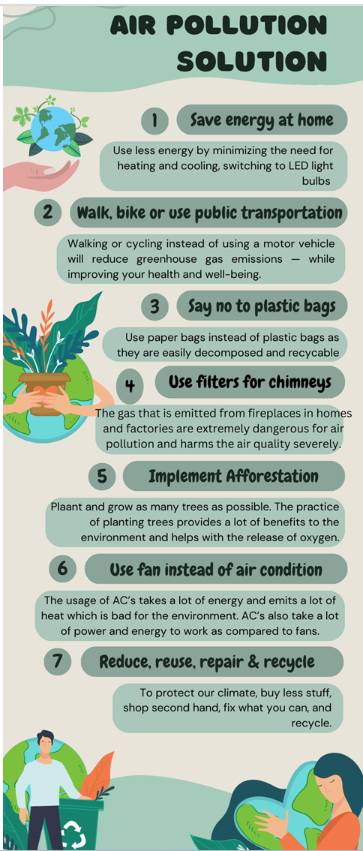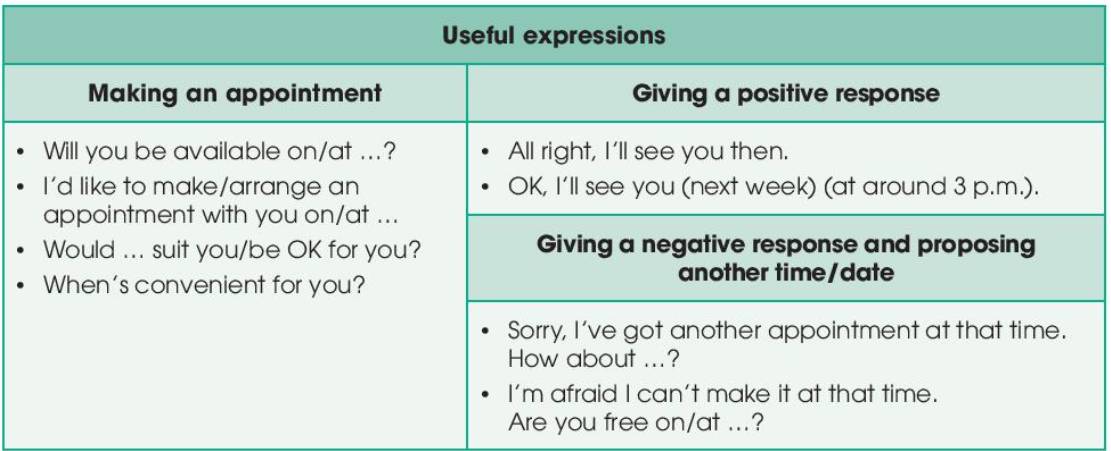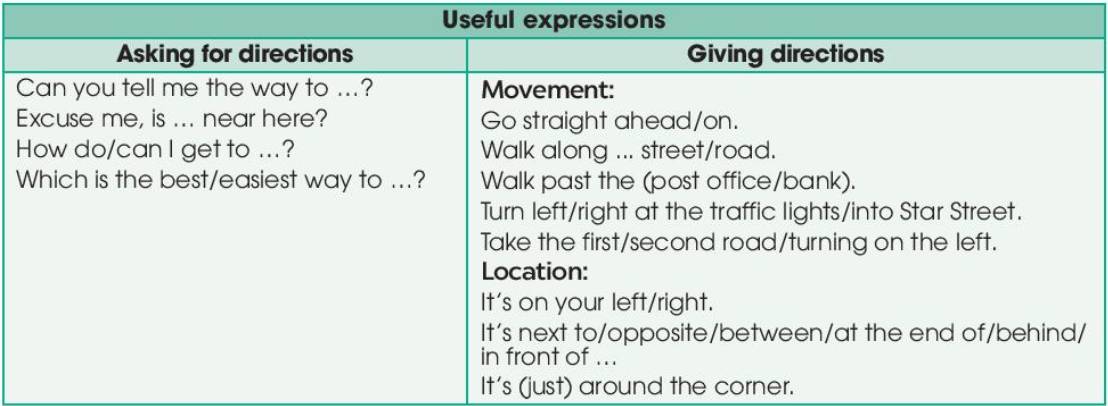3. Work in groups. Choose an environmental problem in 1 and make a presentation on the solutions to it. Use the expressions below to help you.
(Làm việc nhóm. Chọn một vấn đề môi trường trong bài 1 và trình bày các giải pháp cho vấn đề đó. Sử dụng các cụm từ dưới đây để giúp bạn.)
Useful expressions |
Welcoming the audience and introducing the topic (Chào khán giả và giới thiệu chủ đề) Hi everyone. (Chào mọi người.) Good morning/ afternoon. (Chào buổi sáng / buổi chiều.) I’m here today to talk about/ discuss … (Hôm nay tôi ở đây để nói về / thảo luận…) I’d like to talk about … (Tôi muốn nói về…) Today, I’d like to share with you … (Hôm nay, tôi muốn chia sẻ với bạn…) |
Introducing the first point/ idea (Giới thiệu quan điểm/ ý tưởng đầu tiên) Firstly, the problem can be solved by … (Thứ nhất, vấn đề có thể được giải quyết bằng…) The first solution is to … (Giải pháp đầu tiên là…) |
Introducing the second point/ idea (Giới thiệu quan điểm / ý tưởng thứ hai) My next point is … (Điểm tiếp theo của tôi là…) Another solution is to … (Một giải pháp khác là…) |
Finishing the presentation and thanking the audience (Kết thúc bài thuyết trình và cảm ơn khán giả) That concludes our presentation. (Điều đó kết thúc bài thuyết trình của chúng tôi.) That’s the end of our presentation today. (Đó là phần cuối của bài thuyết trình của chúng ta ngày hôm nay.) Thank you for listening. (Cám ơn vì đã lắng nghe.) Thank you for your attention. (Cảm ơn vì sự quan tâm của bạn.) |









.PNG)

Good morning. Today, I’d like to share with you about the solutions to one of the most significant problems in our city - deforestation. Firstly, the problem can be solved by recycling paper, plastics, and wood products. My next point is introducing strict laws to prevent the cutting of natural forests. Another solution is to educate our friends, family, and community by sharing the deforestation facts, and its causes and effects. That’s the end of our presentation today. Thank you for your attention.
Tạm dịch:
Buổi sáng tốt lành. Hôm nay, tôi muốn chia sẻ với các bạn về giải pháp cho một trong những vấn đề nổi bật nhất ở thành phố của chúng ta - nạn phá rừng. Thứ nhất, vấn đề có thể được giải quyết bằng cách tái chế giấy, nhựa và các sản phẩm từ gỗ. Giải pháp tiếp theo của tôi là đưa ra luật nghiêm khắc để ngăn chặn việc chặt phá rừng tự nhiên. Một giải pháp khác là giáo dục bạn bè, gia đình và cộng đồng của chúng ta bằng cách chia sẻ sự thật về nạn phá rừng, nguyên nhân và hậu quả của nó. Bài thuyết trình hôm nay đến đây là hết. Cảm ơn các bạn vì đã chú ý lắng nghe.